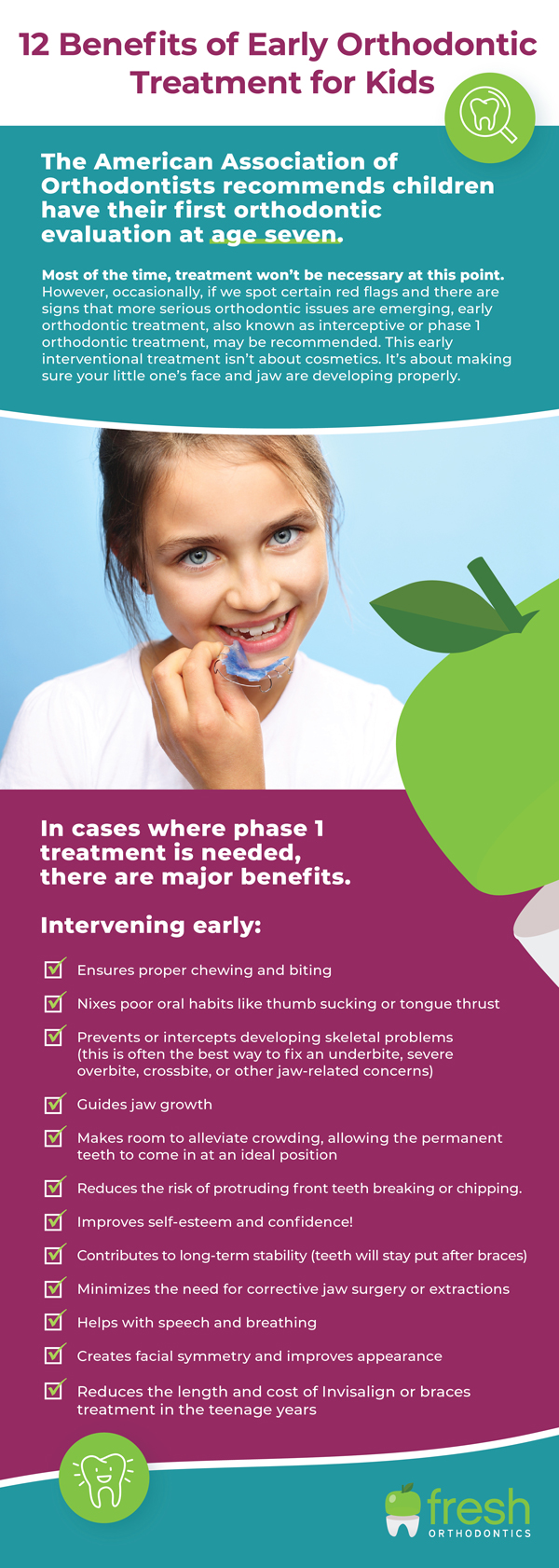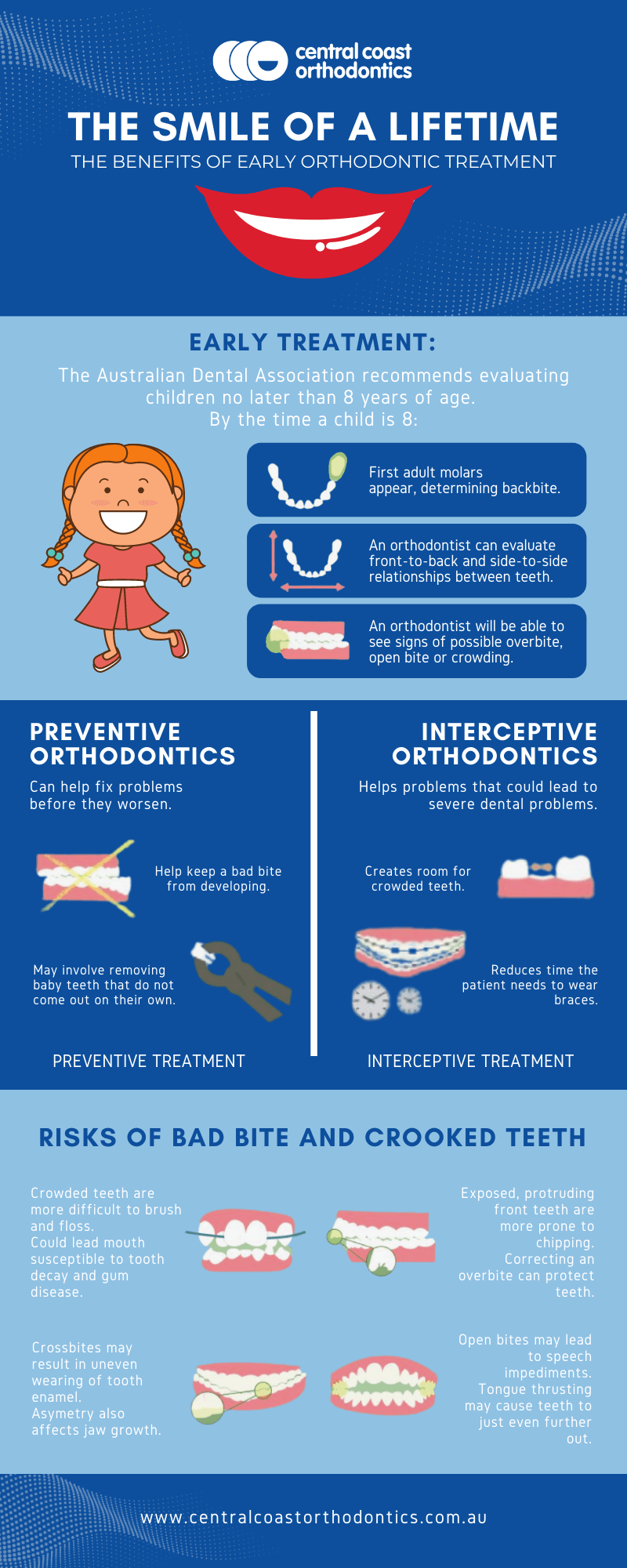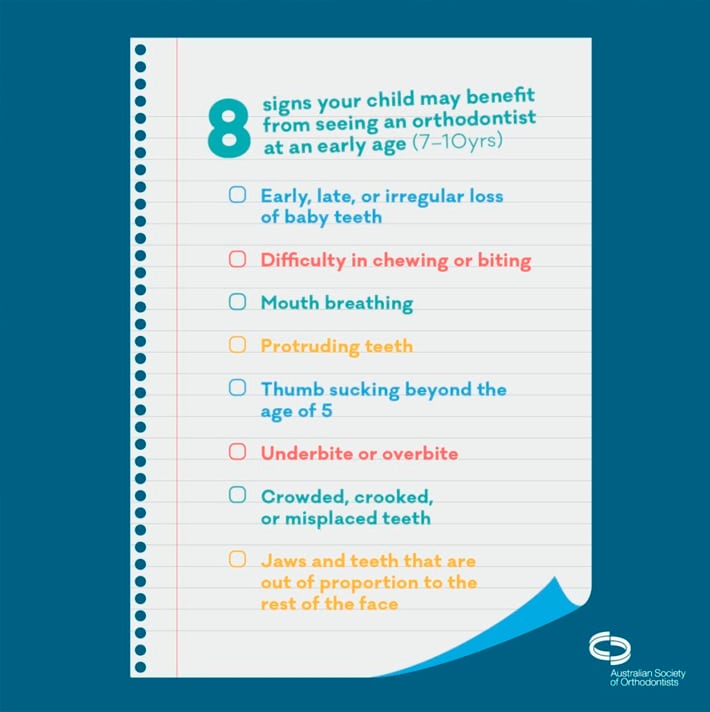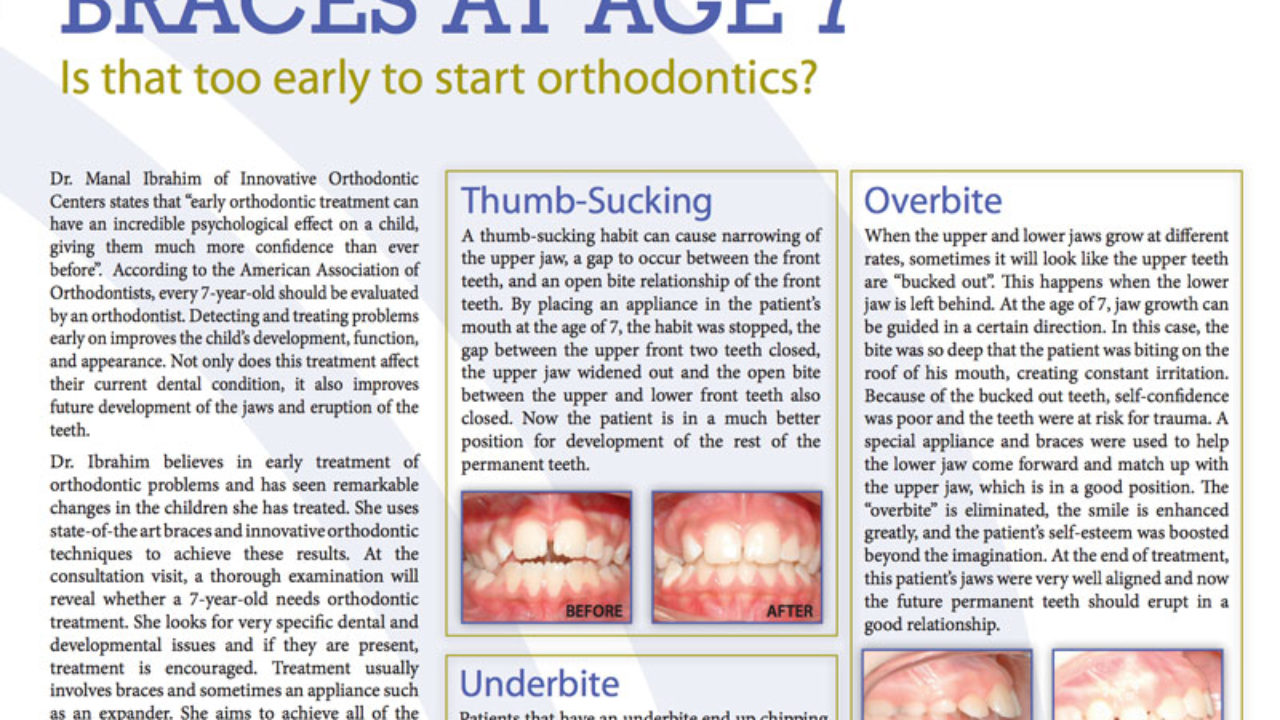Discover the many benefits of early orthodontic intervention for children and why it plays a crucial role in their oral health. By explaining the importance of early orthodontic evaluations and the effectiveness of interceptive orthodontics, you can prevent more severe dental problems later in life. As a Reno orthodontist, providing valuable information to your patients and potential clients about the benefits of early intervention can establish your practice as a trusted source of expertise in the field of orthodontics. Don’t miss this opportunity to educate and guide parents towards making informed decisions for their children’s oral health.
Your Guide to Choosing the Right Orthodontic Treatment
When it comes to orthodontic treatment, there are several options available to help correct misaligned teeth and achieve a straighter smile. The most commonly used orthodontic treatments include traditional braces, Invisalign, and lingual braces. Each treatment option has its own unique advantages and disadvantages, and it’s important to consider these factors when choosing the right treatment for your specific needs.
Traditional Braces
Traditional braces are a tried and true method for straightening teeth. They consist of metal brackets that are bonded to the teeth and connected by wires. Throughout the treatment process, the wires are periodically tightened to gradually shift the teeth into their desired positions.
The advantages of traditional braces include their versatility in treating complex cases and their ability to produce precise and predictable results. Additionally, they are typically more cost-effective compared to other orthodontic options. However, some individuals may find the appearance of metal braces to be less appealing, and they may require more frequent adjustments and longer treatment times.
Invisalign
Invisalign offers a more discreet alternative to traditional braces. This treatment involves a series of clear, removable aligners that are custom-made to gradually move the teeth into their proper positions. The aligners are worn for approximately 22 hours a day and are changed every 1-2 weeks.
One major advantage of Invisalign is its virtually invisible appearance, making it a popular choice for individuals who are concerned about the aesthetic aspect of orthodontic treatment. The aligners are also removable, allowing for easier brushing and flossing compared to braces. However, Invisalign may not be suitable for complex orthodontic cases, and compliance is crucial for successful treatment outcomes.
Lingual Braces
Lingual braces are similar to traditional braces but with a twist. Instead of being placed on the front of the teeth, the brackets and wires are attached to the back of the teeth, making them virtually invisible from the front. This makes lingual braces a great option for individuals who prioritize aesthetics but want the effectiveness of traditional braces.
However, lingual braces can be more challenging to clean and maintain compared to traditional braces. They may also cause initial discomfort due to the brackets being in close contact with the tongue. Additionally, lingual braces are generally more expensive than traditional braces.
Ultimately, the choice of orthodontic treatment depends on various factors, including the severity of your orthodontic issues, your lifestyle, and your personal preferences. Consulting with an experienced orthodontist will help you determine the most suitable treatment option that aligns with your needs and goals.
Common Orthodontic Issues and Their Solutions
Orthodontics can effectively address a wide range of dental issues, enhancing both the function and appearance of your smile. Here are some common orthodontic issues and the solutions that orthodontics can provide:
Overcrowding
Overcrowding occurs when there is insufficient space in the jaw for all the teeth to properly align. This can lead to issues such as overlapping teeth, difficulty with oral hygiene, and an increased risk of dental problems. Orthodontic treatment, such as braces or Invisalign, can gradually shift the teeth into the correct positions, creating sufficient space and improving both the appearance and function of the smile.
Overbite
An overbite is characterized by the upper front teeth overlapping the lower front teeth vertically. In severe cases, an overbite can cause chewing difficulties, speech problems, and excessive wear on the teeth. Orthodontic treatment can help correct an overbite by adjusting the position of the upper and lower teeth, improving the bite and creating a more harmonious smile.
Underbite
An underbite occurs when the lower teeth protrude in front of the upper teeth, causing the lower jaw to appear more prominent. This condition can result in speech difficulties, jaw pain, and an increased risk of tooth damage. Orthodontic treatment, such as braces or Invisalign, can gradually align the teeth and jaws, correcting the underbite and improving both the function and aesthetic of the smile.
Gaps
Gaps between the teeth, also known as diastema, can occur due to various factors, such as genetics, missing teeth, or mismatched jaw size. While some individuals embrace their gaps as a unique feature, others may wish to close them for aesthetic reasons. Orthodontic treatment can help close gaps by shifting the teeth closer together, creating a more cohesive and balanced smile.
Orthodontic treatment is highly effective in addressing these common dental issues. By consulting with an orthodontist, you can receive a personalized treatment plan tailored to your specific needs, ensuring optimal results and a healthier smile.

This image is property of www.freshorthodontics.com.
The Benefits of Early Orthodontic Intervention for Children
Early orthodontic evaluation plays an essential role in children’s oral health and can prevent more severe orthodontic problems in the future. The American Association of Orthodontists recommends that children have their first orthodontic evaluation by the age of seven. Why is early intervention important? Here are the key benefits:
Early Identification of Issues
By evaluating children at a young age, orthodontists can identify any potential orthodontic issues early on. This allows for the timely detection of problems such as crowding, jaw growth discrepancies, and bite irregularities. Early identification also provides an opportunity to address these issues before they become more severe.
Guided Jaw Growth
During childhood, the jaw is still growing, making it an ideal time to influence its development. Interceptive orthodontics, also known as Phase I treatment, can guide the growth and development of the jaws, ensuring proper alignment and preventing more serious problems in the future. This early intervention can help avoid the need for more invasive and extensive treatments, such as jaw surgery, later in life.
Preventative Measures
Early orthodontic intervention not only focuses on addressing existing issues but also aims to prevent potential problems. Orthodontists can recommend preventive measures, such as the use of spacers or limited orthodontic appliances, to create space for erupting permanent teeth and ensure proper alignment. These interventions can minimize the need for more extensive orthodontic treatment in the future.
Improved Long-Term Outcomes
By addressing orthodontic issues at an early age, children can benefit from improved long-term outcomes. Early intervention can help achieve a more balanced facial profile, better alignment of the jaws and teeth, and enhanced oral function. Additionally, addressing orthodontic problems early can contribute to improved self-esteem and confidence as children grow and develop.
It’s important to note that not all children will require early orthodontic intervention. However, an early evaluation by an orthodontist can provide valuable insights into your child’s oral health and potential orthodontic needs. By taking proactive measures, you can give your child the best chance at a healthy and beautiful smile.
Adult Orthodontics: It’s Never Too Late for a Straight Smile
Orthodontic treatment is often associated with children and teenagers, but the truth is, it’s never too late to achieve a straighter smile. Many adults who missed out on orthodontic treatment during their younger years are now seeking options to improve the alignment of their teeth and enhance their overall oral health. Here’s why adult orthodontics is a viable option:
Changing Perceptions
In the past, there was a common misconception that orthodontic treatment was only for children and teenagers. However, perceptions have shifted, and adults are now embracing orthodontic options to improve their smiles. With advancements in orthodontic technology, there are now discreet and efficient treatments available to suit the needs and lifestyles of adults.
Treatment Options for Adults
Adults have a range of orthodontic treatment options to choose from. While traditional braces are still a popular choice, there are also more discreet alternatives available. Invisalign, for example, uses clear aligners that are virtually invisible, allowing adults to straighten their teeth without the appearance of traditional braces. Lingual braces are another option, as they are attached to the back of the teeth and are hidden from view.
Addressing Oral Health Issues
Orthodontic treatment in adulthood is not solely focused on enhancing the appearance of the smile. It can also address oral health issues that may have developed over time. Crooked or misaligned teeth can be more difficult to clean effectively, leading to an increased risk of tooth decay, gum disease, and even tooth loss. Straightening the teeth through orthodontic treatment can help mitigate these risks and improve overall oral health.
Boosting Self-Confidence
A straighter smile can have a significant impact on an individual’s self-confidence and overall well-being. Many adults who pursue orthodontic treatment report increased self-esteem and a more positive self-image. Feeling confident in your smile can have far-reaching effects, improving social interactions, career prospects, and overall quality of life.
If you’re an adult considering orthodontic treatment, it’s important to consult with an experienced orthodontist who specializes in adult orthodontics. They can assess your specific needs and recommend the most suitable treatment options for achieving a straighter and healthier smile.

This image is property of centralcoastorthodontics.com.au.
Maintaining Oral Hygiene During Orthodontic Treatment
Maintaining good oral hygiene is essential throughout orthodontic treatment to ensure optimal oral health and prevent issues such as cavities and gum disease. While wearing braces or aligners may require some adjustments to your oral care routine, practicing proper hygiene techniques can help you maintain a healthy smile. Here are some practical tips to keep your teeth and braces clean:
Brushing
Brushing your teeth is even more important when you have braces or aligners. Use a soft-bristle toothbrush and fluoride toothpaste to clean your teeth thoroughly. Angle the brush towards the gumline and make small circular motions to ensure all areas are cleaned. Pay extra attention to the gumline, brackets, and wires, as these areas can harbor plaque and food particles.
Interdental Cleaning
Flossing becomes more challenging with braces, but it’s crucial to keep your teeth and gums healthy. Use a floss threader or orthodontic floss to navigate between the wires and brackets. Gently slide the floss up and down each side of the tooth, making sure to reach below the gumline. Water flossers or interdental brushes can also be effective tools for cleaning hard-to-reach areas.
Mouthwash
Using an antimicrobial mouthwash can help kill bacteria and freshen your breath. Swish the mouthwash around your mouth for the recommended duration, making sure to reach all areas. Avoid using a mouthwash that contains alcohol, as it can cause dryness and irritation.
Regular Dental Check-ups
Continue to schedule regular dental check-ups and cleanings throughout your orthodontic treatment. Your dentist can assess your oral health, clean your teeth more thoroughly, and monitor any changes or issues. They may also provide additional recommendations or adjustments to your oral care routine.
Dietary Considerations
During orthodontic treatment, it’s important to be mindful of the foods you consume to avoid damaging your braces or aligners. Avoid hard, sticky, and chewy foods that can cause brackets to break or wires to bend. Cut your food into small, manageable pieces and chew slowly and carefully.
By following these practical tips, you can maintain proper oral hygiene and minimize the risk of dental issues during your orthodontic treatment. Remember, good oral care practices not only help ensure successful treatment outcomes but also contribute to long-term oral health.
Life with Braces: What to Expect and How to Adjust
Adjusting to life with braces can take some time, but with the right mindset and a few adjustments, it can become a seamless part of your routine. Here’s what to expect when you first get braces and how to navigate common challenges associated with orthodontic treatment:
Initial Discomfort
When you first get braces, you may experience some initial discomfort as your mouth adjusts to the new appliances. This discomfort is normal and typically subsides within a few days. Over-the-counter pain relief such as ibuprofen can help alleviate any soreness. If the discomfort persists or becomes more severe, consult your orthodontist.
Eating Adjustments
Eating with braces may require some modifications to your diet. Initially, it’s best to stick to softer foods that won’t put excessive pressure on your braces. Avoid hard, sticky, and chewy foods that can damage brackets and wires. Instead, opt for foods that are easier to chew, such as soups, pasta, cooked vegetables, and soft fruits. As you become more comfortable with your braces, you can gradually reintroduce harder foods.
Oral Care Routines
Maintaining good oral hygiene is crucial when you have braces. You’ll need to spend extra time and care to clean your teeth and braces effectively. Follow a thorough brushing and flossing routine as outlined by your orthodontist. Consider using orthodontic-specific products such as interdental brushes and floss threaders to clean between brackets and wires.
Orthodontic Adjustments
Throughout your orthodontic treatment, you’ll need to visit your orthodontist periodically to have your braces adjusted. These adjustments involve tightening the wires to continue shifting your teeth into their proper positions. While these appointments may cause some discomfort or soreness, it’s important to attend them as scheduled to ensure the success of your treatment.
Handling Challenges
Wearing braces can come with some challenges, but with patience and perseverance, you can overcome them. If a bracket or wire becomes loose or broken, contact your orthodontist for advice. They may recommend temporarily relieving any discomfort by using orthodontic wax or scheduling an emergency visit. In the meantime, try to avoid hard or sticky foods that could further damage your braces.
Remember, your orthodontist is there to support you throughout your treatment journey. Don’t hesitate to reach out to them if you have any questions or concerns. With time, you’ll become more accustomed to life with braces, and the end result of a straighter smile will be well worth it.

This image is property of orthodonticsaustralia.org.au.
Invisalign: The Clear Path to a Straighter Smile
Invisalign is a popular orthodontic treatment option that offers a clear and discreet path to a straighter smile. This innovative system utilizes a series of clear aligners that are custom-made to fit snugly over your teeth, gradually shifting them into their desired positions. Here’s how Invisalign works and why it has advantages over traditional braces:
Custom Treatment Plan
The first step in Invisalign treatment is a consultation with an Invisalign-certified orthodontist. They will assess your teeth and develop a custom treatment plan tailored to your specific needs. Using advanced 3D imaging technology, the orthodontist will create a digital representation of your teeth and map out the precise movements required to achieve your desired smile.
Clear Aligners
Once your treatment plan is finalized, a set of clear aligners will be custom-made for you. Each set of aligners is worn for approximately 1-2 weeks, gradually moving your teeth into their new positions. The aligners are virtually invisible, making them a discreet option for individuals who want to straighten their teeth without the appearance of traditional braces.
Convenience and Removability
One of the major advantages of Invisalign is the convenience of the aligners. The aligners are removable, allowing you to eat, drink, brush, and floss without any restrictions. This means you can still enjoy your favorite foods without worry and maintain your regular oral hygiene routine. However, it’s important to wear the aligners for the recommended 22 hours per day to ensure optimal treatment results.
Fewer Orthodontic Appointments
Compared to traditional braces, Invisalign treatment typically requires fewer orthodontic appointments. After your initial consultation and the delivery of your aligners, you’ll only need to visit your orthodontist periodically for check-ups and to receive new sets of aligners. This can be especially beneficial for individuals with busy schedules who require a more flexible treatment option.
Predictable Treatment Outcome
Invisalign utilizes advanced technology to predict and visualize the outcome of your treatment before it even begins. Using the digital treatment plan, you can see a virtual representation of how your teeth will move and what your final smile will look like. This predictability allows for more accurate treatment planning and provides peace of mind throughout the process.
While Invisalign offers many advantages over traditional braces, it may not be suitable for everyone. Your orthodontist will assess your specific needs and determine if Invisalign is the right option for you. With its clear aligners, convenience, and predictable outcomes, Invisalign can help you achieve the straighter smile you desire.
Smile Makeovers: The Role of Orthodontics in Enhancing Your Appearance
Orthodontic treatment plays a significant role in enhancing your appearance and can contribute to a more confident smile. Many individuals seek orthodontic treatment not only to correct dental issues but also to improve their overall facial aesthetics. Here’s how orthodontics can transform your smile and help you achieve a more confident and attractive appearance:
Correcting Misalignment
Orthodontic treatment is primarily aimed at correcting misalignment issues, such as crooked or crowded teeth, gaps, and malocclusions. By aligning the teeth and improving their overall positioning, orthodontics can create a more harmonious smile and improve facial symmetry. Straighter teeth can also enhance the appearance of your lips and cheeks, resulting in a more balanced facial profile.
Improving Dental Function
Orthodontic treatment not only focuses on aesthetics but also plays a crucial role in improving dental function. Misaligned teeth can cause difficulties in chewing, speaking, and maintaining proper oral hygiene. By addressing these issues, orthodontics can enhance overall oral function, making it easier to bite, chew, and speak properly. This, in turn, can boost your confidence and quality of life.
Confidence Boost
A confident smile can have a significant impact on your overall self-esteem and how others perceive you. Orthodontic treatment can help correct dental imperfections, giving you a straighter and more attractive smile. As you become more confident in your smile, you’re likely to feel more comfortable expressing yourself and interacting with others, both personally and professionally.
Before-and-After Success Stories
Before-and-after success stories can provide powerful visual representations of the transformative power of orthodontics. By sharing these stories with patients, orthodontists can showcase the potential outcomes of treatment and inspire confidence in individuals considering orthodontic options. These stories can illustrate the positive impact that orthodontics can have on both appearance and self-confidence.
If you’re considering orthodontic treatment to enhance your appearance, it’s important to consult with an experienced orthodontist who specializes in aesthetic orthodontics. They can assess your specific needs, discuss your goals, and develop a personalized treatment plan to help you achieve the smile of your dreams.

This image is property of www.innovativepediatricdentistry.com.
Choosing an Orthodontist: What to Look For
Choosing the right orthodontist is a crucial step in your orthodontic journey. An experienced and qualified orthodontist can ensure that you receive the best possible care and achieve optimal treatment outcomes. When selecting an orthodontist in Reno, consider the following factors:
Credentials and Experience
It’s important to confirm that the orthodontist you choose has the necessary credentials and experience in the field of orthodontics. Look for an orthodontist who is a member of reputable professional organizations, such as the American Association of Orthodontists (AAO). Additionally, consider their years of experience and their track record of successful cases.
Technology and Treatment Options
Advancements in orthodontic technology have greatly transformed the treatment process, resulting in more efficient and effective outcomes. Look for an orthodontist who utilizes the latest technologies and treatment options, such as digital scanning, 3D imaging, and advanced orthodontic appliances. This ensures that you receive state-of-the-art care that maximizes your treatment experience.
Patient Reviews and Testimonials
Reading patient reviews and testimonials can provide valuable insights into the quality of care and patient satisfaction at a particular orthodontic practice. Look for positive reviews that highlight the orthodontist’s expertise, professionalism, and patient-centered approach. You can also ask friends, family, or your general dentist for recommendations.
Consultation and Communication
The initial consultation is an important opportunity to assess the orthodontist’s communication style and how well they understand your concerns and goals. During the consultation, pay attention to how the orthodontist explains the treatment process and answers your questions. They should take the time to listen to your needs, provide recommendations, and ensure that you feel comfortable and well-informed.
Financial Considerations and Insurance Coverage
Orthodontic treatment can vary in cost depending on the complexity of your case and the treatment option chosen. Before choosing an orthodontist, inquire about the cost of treatment and the available payment options. Additionally, check if the orthodontic practice accepts your dental insurance plan or offers flexible financing options.
By considering these factors and conducting thorough research, you can select an orthodontist who meets your specific needs and provides the highest standard of care. Remember, orthodontic treatment is a journey that requires trust and collaboration between you and your orthodontist, so choose wisely.
Orthodontics and Overall Health: The Connection You Should Know
Orthodontic health is intricately connected to overall well-being, and addressing orthodontic issues can positively impact various aspects of your health. While many individuals seek orthodontic treatment to improve the appearance of their smiles, the benefits extend far beyond aesthetics. Here’s how orthodontics can contribute to your oral health and overall wellness:
Improved Oral Hygiene
Straightening misaligned teeth through orthodontic treatment can make it easier to maintain good oral hygiene practices. Crooked or overcrowded teeth can create challenges when brushing and flossing, as they can trap food particles and plaque. By aligning the teeth, orthodontics facilitates more effective brushing and flossing, reducing the risk of tooth decay, gum disease, and other oral health problems.
Periodontal Health
Periodontal health is closely linked to the alignment and positioning of the teeth. Misaligned teeth can cause uneven pressure distribution during biting and chewing, potentially leading to gum recession, bone loss, and periodontal disease. Orthodontic treatment can help correct these issues, reducing the risk of periodontal disease and promoting healthier gums and bone structure.
Jaw Alignment
Orthodontic treatment can also address jaw alignment issues, such as overbites, underbites, or crossbites. Proper jaw alignment is essential for optimal oral function and can prevent issues such as temporomandibular joint (TMJ) disorders, headaches, and excessive tooth wear. Orthodontics can help align the jaws, improving oral function and diminishing the risks associated with these conditions.
Speech and Pronunciation
Misaligned teeth or jaw positions can result in speech difficulties and pronouncing certain sounds properly. Orthodontic treatment can help align the teeth and jaws, improving articulation and speech clarity. Correcting these issues can enhance communication skills and boost self-confidence in both personal and professional settings.
Self-Esteem and Well-Being
Orthodontic treatment can have a profound impact on an individual’s self-esteem and overall well-being. Feeling confident in your smile can improve self-image, increase self-assurance, and positively impact mental health. A healthy and attractive smile can also improve social interactions and open doors to new opportunities, ultimately contributing to a higher quality of life.
By addressing orthodontic issues, you can achieve a straighter smile and improve various aspects of your health and well-being. Consulting with an experienced orthodontist will help ensure that you receive the appropriate treatment and enjoy the numerous benefits that orthodontics can offer.
This image is property of images.squarespace-cdn.com.
